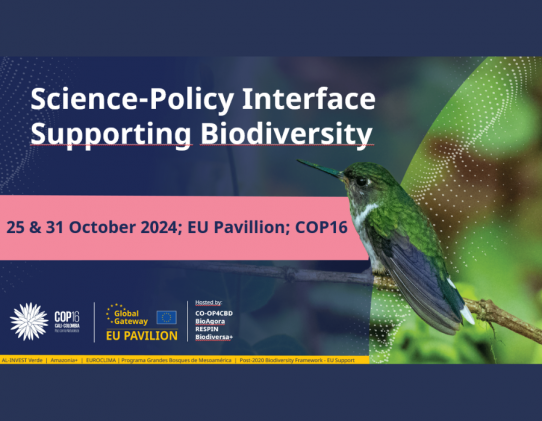
Credit: Pensoft Publishers
Key Side Events from UNCBD’s COP16 Now Available Online: Discussion on the Role of the Science-Policy Interface in Biodiversity
The contents of this article were also published in the form of a press release on EurekAlert! and AlphaGalileo.
On 21 October 2024, the 16th Conference of Parties to the Convention on Biological Diversity (UN CBD’s COP16), commenced in Cali, Colombia. The world’s biggest biodiversity summit saw intensive discussions and negotiations on what the protection and restoration of the planet’s species could and should look like. Over 40,000 members of decision-making bodies, research consortia, activist organisations and indigenous communities made COP16 the best-attended conference of its type in history.
On a political level, the most notable decisions reached in Cali were:
-
the creation of the “Cali” Fund to collect resources from the use of digital sequence information and allocate them to conservation efforts;
-
the recognition of indigenous peoples as protagonists in biodiversity conservation and the allocation of a new subsidiary body to them;
-
the establishment of a network of regional Centers for Scientific and Technical Cooperation in support of CBD implementation efforts.
Nevertheless, a number of issues remained unresolved by the time negotiations were suspended on 1 November. It was decided that these matters would be picked up at a resumption of COP16 which is to be held in Rome, Italy between 25 and 27 February. Hosted by the UN’s Food and Agriculture Organisation (FAO), this continuation is set to address resource mobilisation, monitoring and assessment strategies associated with the CBD and its Kunming-Montreal Global Biodiversity Framework (KM-GBF).
Beyond the delegate-led exchanges behind closed doors, COP16 provided an invaluable opportunity for biodiversity specialists and enthusiasts from around the world to come together and enrich the global conversation with new topics, perspectives and deliberations. It is in that spirit that Horizon Europe projects CO-OP4CBD and BioAgora entered the fold with a synergistic partnership at the summit. In cooperation with fellow initiatives RESPIN and Biodiversa+, they seized the occasion to promote the importance of a Science-Policy Interface (SPI) in the context of the CBD’s implementation.
They did so by organising two side events on the topic at COP16’s EU Pavilion. Each of them brought together a panel of experts from all four projects and beyond, highlighting the importance of biodiversity policy being built upon accurate, relevant and timely scientific insights. Below is a summary of each of their respective foci:
Side Event 1: Discussion on the SPI Landscape & the Role of SPIs in Supporting the Implementation and Monitoring of the KM-GBF (25 October)
The panel discussion centred around the effective integration of scientific research into policy frameworks in pursuit of the successful monitoring and implementation of the KM-GBF. In that sense, the role of SPIs in opening the door for evidence-based decisions in biodiversity policy was highlighted.
Side Event 2: SPI Contribution to the Subjects of Biodiversity & Health and Biodiversity & Climate Change (31 October)
The interconnectedness between biodiversity, health and climate change, as well as the critical importance of SPIs in that causal nexus, was at the core of this session. Conversations took place on the contributions of targeted scientific research to effective policy-making in the domains of human and environmental health alike as an increasingly ambitious global climate agenda is being set..
The side events were not the sole item on the projects’ agenda for COP16. Additionally, the quartet held a joint press conference, laying out their vision and mission to the world press. Moreover, CO-OP4CBD and BioAgora were also represented via the wide dissemination of promotional materials on the conference floor. Specially designed brochures, one-pagers and even stickers were disseminated amongst attendees, ensuring the maximisation of the initiatives’ visibility during the summit.